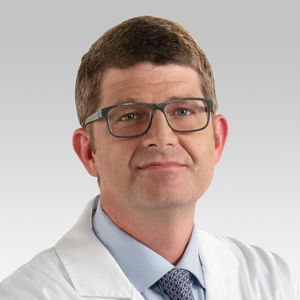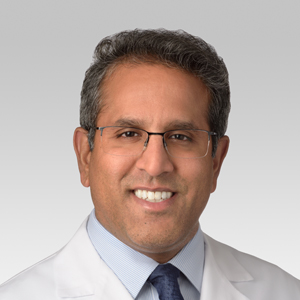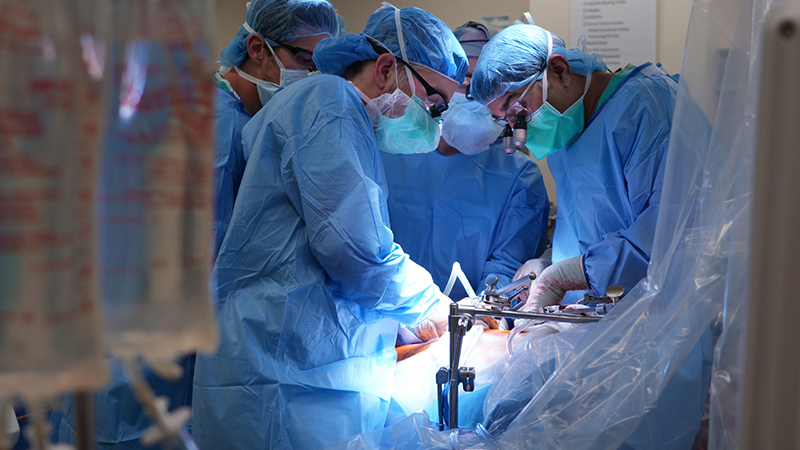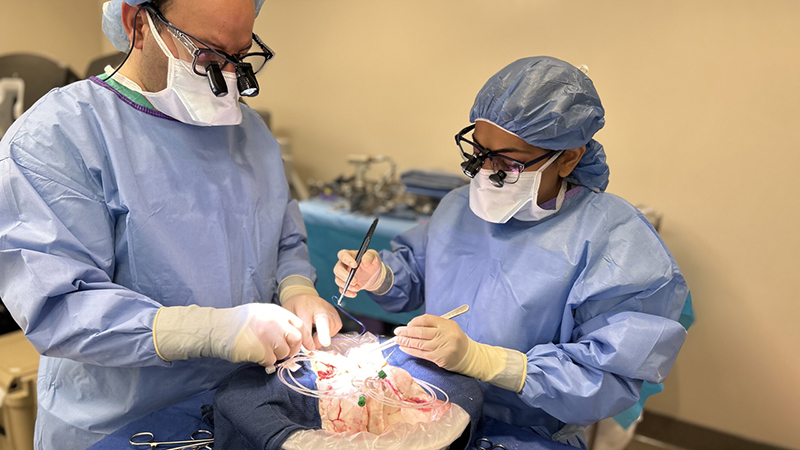Chordoma: The 1 in a Million Cancer
Published May 2019
Rare Cancer Calls for Rare Expertise
Chordomas are rare tumors that occur in one out of one million people. They are malignant tumors that tend to grow slowly and can spread to other parts of the body.
They can often be confused with other diseases. And because of their unique self-seeding nature, proper treatment decreases the chances that they’ll spread and reoccur. Therefore, it’s extremely important to find a care team that is experienced in diagnosing, treating and following patients with chordomas.
Internationally renowned chordoma surgeon Jean-Paul Wolinsky, MD, and chordoma radiation oncologist Vinai Gondi, MD, are experienced specialists recognized by the Chordoma Foundation for their expertise. Dr. Wolinsky, who sees patients at Northwestern Medicine Chordoma Center, is one of the few physicians in the world who has experience performing the complex procedure to remove spinal chordomas. Dr. Gondi specializes in proton therapy and radiosurgery, and performs both treatments on chordomas at Northwestern Medicine Proton Center, the only proton center in Illinois.
Here they discuss the treatment of chordomas and how Northwestern Medicine is on the quest for better outcomes.
Understanding Chordomas
Chordoma tumors develop from cells of a tissue called the notochord and can occur anywhere along the spine, from the base of the skull to the tailbone.
Because they tend to be slow-growing tumors, you may not experience symptoms for some time. Additionally, symptoms will vary, based on the location and size of the tumor. For example, chordomas located in the skull base may result in:
- General weakness
- Double vision
- Headaches
- Impacted hearing
- Difficulty swallowing
- Speech and voice abnormalities
However, if your tumor happens to be located along the spine, you may experience:
- General weakness
- Pain in the legs
- Back pain
- Loss of bladder or bowel control
Chordomas are initially detected through magnetic resonance imaging (MRI). “If it looks like a chordoma, the most important thing is to make sure you get the right diagnosis, which will allow us to make sure you get the right treatment,” says Dr. Wolinsky. If the MRI shows the possibility of a chordoma, a definitive diagnosis can be made with a biopsy guided by a CT scan.
Like a Dandelion: A Self-Seeding Tumor
Not only are chordomas rare, treatment includes highly complex procedures that require extensive training.
Consider a dandelion: When you blow the seeds, they self-plant and begin to grow where they land. Likewise, a chordoma is one of the few tumors that can “seed” its cells to surrounding tissues. If a tumor is ruptured in surgery, tumor cells will spill into surrounding areas, planting new seeds that will grow into new tumors.
“When we remove the tumor, we have to ensure there is no spillage of cells,” says Dr. Wolinsky, who has performed more than 100 chordoma surgeries.
The procedure takes a team of specialists from a variety of fields, from anesthesiology to plastic surgery. Together, they work for 10 to 14 hours to completely remove the tumor, intact, without spillage. Depending on the location of the tumor, bone may need to be removed as well and replaced with metal grafts, which act as a scaffold for the bone to regenerate itself.
While challenging, Dr. Wolinsky embraces the opportunity to care for patients with chordomas. “It’s rewarding because of the impact you can have on lives,” he notes.
The Sharper Edge of Proton Therapy
Chordoma treatment also typically requires highly complex radiation therapy in order to eradicate any cancer cells without damage to nearby tissues. Because they are located near critical structures such as the brain and spinal cord, proton beam therapy is the most frequently recommended kind of radiation treatment. Proton therapy uses protons instead of X-rays to deliver precise, highly concentrated radiation directly to cancer cells without destroying the surrounding healthy tissue.
“The unique properties of proton therapy permit a sharper edge between the tumor that requires a higher radiation dose and the surrounding healthy tissue that needs to be spared,” says Dr. Gondi, who treats more than a dozen patients with chordomas in a typical year, referred from throughout the U.S. and Canada.
“As we improve both our technology and our understanding of chordoma biology, we are harnessing both to enhance outcomes in our patients both in terms of tumor control, as well as their quality of life,” says Dr. Gondi.
Both Dr. Wolinsky and Dr. Gondi continue to explore new opportunities for treatment in their respective specialties. For example, 3D printed bones or carbon fiber implants could be used as potential substitutes for titanium reconstruction, which may help bones heal more quickly. Additionally, continued advances in proton therapy and the use of novel drug therapies during proton therapy may permit safer and more effective treatment.
Together, Dr. Wolinsky and Dr. Gondi offer patients at Northwestern Medicine Chordoma Center the most advanced treatment options, with coordinated care. And though chordomas are rare in the general population, they are not rare to these Northwestern Medicine specialists who are paving the way for better outcomes for patients.







